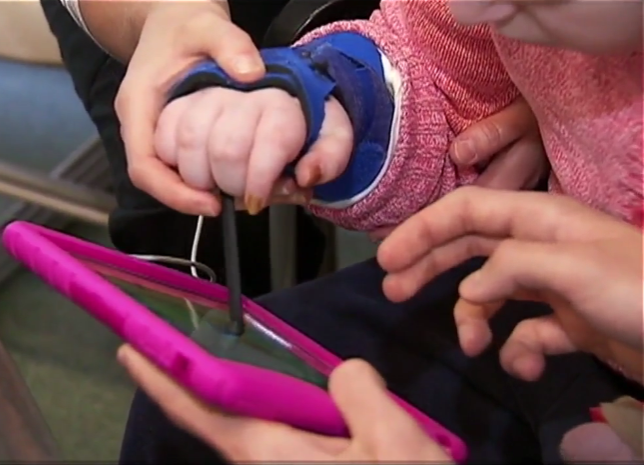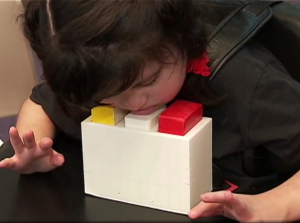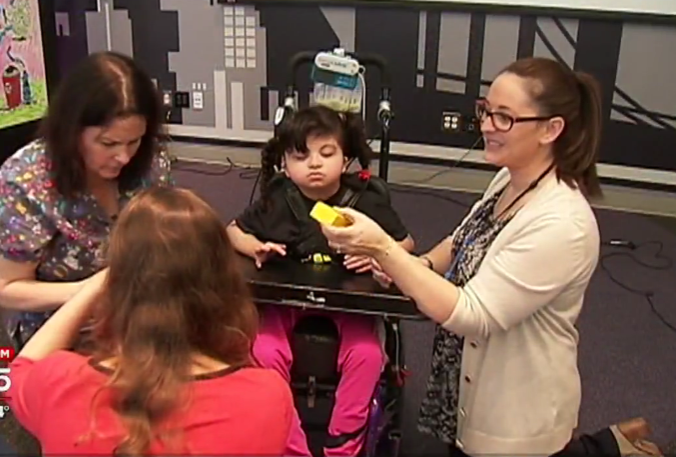 In western Long Island, New York, off the shores of Little Neck Bay, is St. Mary’s Hospital for Children. It’s a place of healing, comfort and rehabilitation for children with complex and often chronic conditions that interfere with their quality of life. According to the hospital’s website, their mission is to “help kids be kids,” which they do through a combination of recreational activities plus therapy and treatment. They’ve also recently received some help from a local high school, which is using 3D printing to help some of those kids to develop important skills and gain some independence.
In western Long Island, New York, off the shores of Little Neck Bay, is St. Mary’s Hospital for Children. It’s a place of healing, comfort and rehabilitation for children with complex and often chronic conditions that interfere with their quality of life. According to the hospital’s website, their mission is to “help kids be kids,” which they do through a combination of recreational activities plus therapy and treatment. They’ve also recently received some help from a local high school, which is using 3D printing to help some of those kids to develop important skills and gain some independence.
Lynbrook High School’s Advanced Design and Innovation Class is studying 3D printing, and they’re using it in one of the most important ways that the technology can be: to design adaptive and assistive devices for children, namely the children at St. Mary’s Hospital. Take Mary, for example. The 17-year-old has a condition that greatly limits the movement of her wrists, and thus limits the things she can do with her hands. Thanks to a 3D printed stylus designed by the Lynbrook High students, though, she can now use an iPad to learn and play games. While a stylus might seem like an easy design, it was a lot of work for the students, who needed to figure out a way for Mary to securely grasp it – which they did by adding a triangular piece which fits into her palm, where she can curl her fingers around it.
“We printed out many prototypes to figure out sizes and dimensions, and so it’s been a long process,” said Lynbrook senior Aleksandra Ratkiewicz. “I love designing, but to know that I can put it in real life practice and change someone’s life on a daily basis is incredible.”
In some cases, the children come up with their own ways to use the devices – ways that the designers didn’t necessarily envision, but that work just as well or better. One young girl was presented with a toy intended to develop her cognitive skills by helping her to understand cause and effect. The toy consists of three blocks that can be raised and lowered by pressing down on them alternately – which the girl decided to do with her chin rather than her hands, but which still improved her cognitive skills and coordination.
 The class is taught by Paul Rotstein, a technology education teacher at Lynbrook High. He’s pleased with the way the course has gone, not only for his students but for the kids they are helping. The designs give them independence, he says, allowing them to use their iPads or speech devices without assistance for the first time. In some cases, the 3D printed toys and games serve another purpose: to comfort and distract the children while they are undergoing difficult treatments.
The class is taught by Paul Rotstein, a technology education teacher at Lynbrook High. He’s pleased with the way the course has gone, not only for his students but for the kids they are helping. The designs give them independence, he says, allowing them to use their iPads or speech devices without assistance for the first time. In some cases, the 3D printed toys and games serve another purpose: to comfort and distract the children while they are undergoing difficult treatments.
“To stimulate them mentally with a puzzle, I felt like it was tagging on two fronts,” says student Michael K. Deegan, who created a 3D printed puzzle for the kids to work on while stuck in treatment. “It’s such a joy, and it’s such a pleasure to see them be able to apply something I’ve designed into their lives.”
Projects like this one are a wonderful way to engage students in 3D printing – and maybe point them towards careers using the technology to help others. It’s one thing to teach 3D printing in the classroom, but to have students use it for real-life applications that directly show them the difference the technology can make in people’s lives is much more impactful – on them, on the people they’e already helped, and those they may help in the future. What are your thoughts on this project? Discuss in the 3D Printed Pediatric Adaptive Devices forum over at 3DPB.com.
[Source: Fox5NY]Subscribe to Our Email Newsletter
Stay up-to-date on all the latest news from the 3D printing industry and receive information and offers from third party vendors.
You May Also Like
NSF Awards Kentucky $1M for Advanced Manufacturing
The National Science Foundation has awarded a $1 million grant to the University of Louisville for the Advancing Manufacturing and Building Construction Technologies (NSF AMT) project. This initiative is part...
3D Printing News Briefs, May 11, 2024: 3D Printed Stent, Tower, Sculptures, & More
We’re starting off with medical research in today’s 3D Printing News Briefs, as researchers in Korea used CT images and 3D printing to fabricate an educational simulator for a mastoidectomy....
3D Printing Unpeeled: Wind Turbines, Probiotics and Lenses
TPI Composites, ORNL and Ingersoll Rand are working to make wind turbine tooling segments that can be 18.3 meters long. These elements also include resistive wires that help keep the...
Tethon 3D Releases Cost-effective Bioprinter
Tethon 3D, known for its ceramic-loaded DLP materials, custom resins, and DLP 3D printers, has recently released a bioprinter. Vat polymerization printers like DLP systems have been widely used by...


































